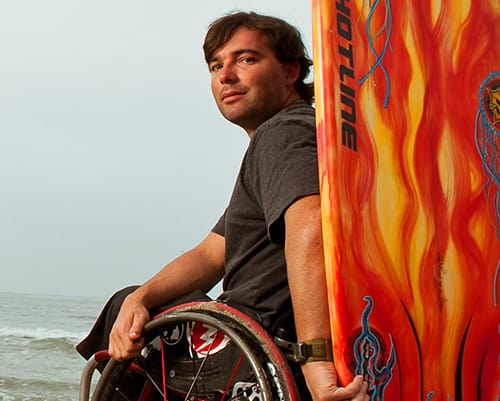
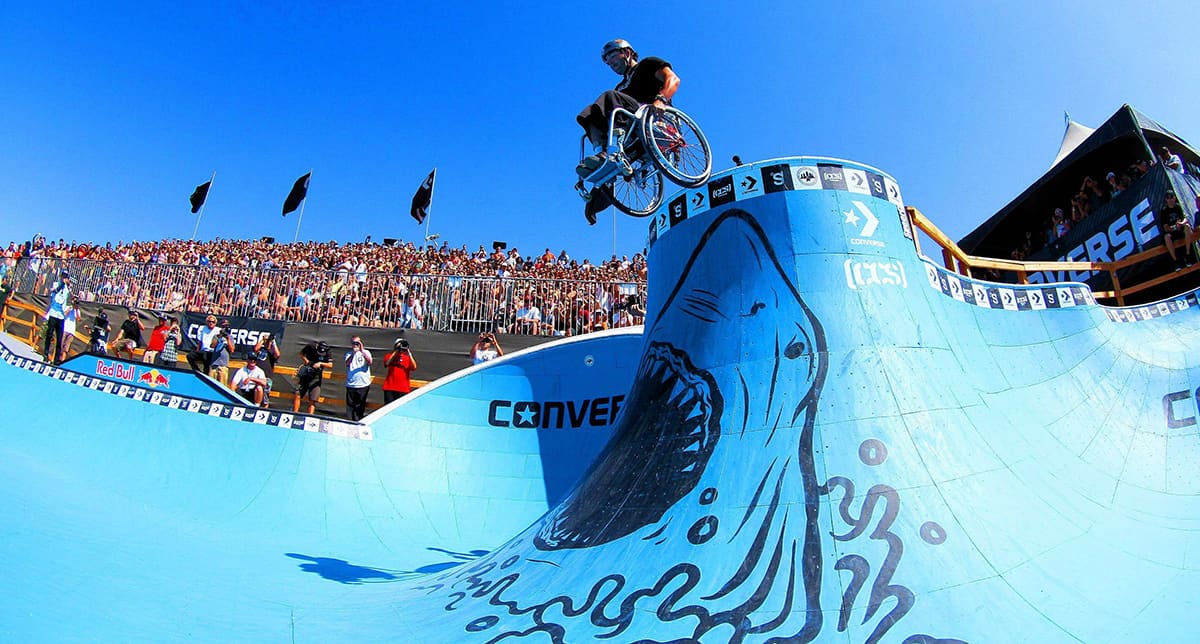
.
To get started, there are a couple of things you should know about Christiaan “Otter” Bailey. The first is that 37-year-old Bailey knew how to shred before his spinal cord injury, and he knows how to shred now. Bailey started surfing and skateboarding when he was 4 years old, and was sponsored in both sports at the ripe old age of 12. Today, just over a decade after he broke his L3-4 vertebrae while filming a video segment for Santa Cruz Skateboards, he is still a sponsored surfer and (chair) skater, traveling the world, performing at stops on the World Surf League’s World Championship Tour of Surfing and dropping into quarter pipes from California to Indonesia.
That Bailey shreds the world is cool, but what makes him unique is how much good he does in the process. For much of the past decade he’s been working with Global Mobility, a nonprofit that delivers wheelchairs to kids and adults who need them all over the world. Bailey is part of the process that helps get, not just a wheelchair, but the right, properly fitted wheelchair to individuals that likely have never had such a thing, offering a key step toward independent mobility. In addition, he founded and runs Ocean Healing Group, a nonprofit that brings kids with physical disabilities to a surf camp in Costa Rica, using adventure to help families transcend the rehab mindset and develop skills and confidence to last a lifetime. For Bailey, adventure is about a whole lot more than just having fun.
What’s in a Name?

The second thing you should know is that Bailey feels fortunate to have the nickname “Otter.” Why this is so goes back to the time and place he grew up: Santa Cruz, California, in the late 1980s. It was a childhood that underpins the hard-charging style that, paralysis or not, Bailey brings to his life’s myriad of adventures.
“Santa Cruz back then was gnarly. Unless you’re a surfer from Venice back in the ’70s, I don’t think you can really compare it to any other place in California. It was cold water, big sharks, and even bigger waves. If you did well and you showed the proper amount of respect, then, as a kid out there, eventually you’d be invited to The Point [where the best surf in Santa Cruz was located] and you’d earn a nickname.”
“I had a bad habit as a kid of going free-diving out at Steamer Lane and I’d go rake abalone and oysters off the reef. I’d float on my back and collect my catch and [Shawn ‘Barney’ Barron, a legendary surfer from Santa Cruz] said, ‘Oh my God, that’s the biggest fucking otter I’ve ever seen.’ The name stuck. I feel pretty fortunate to have that nickname. Most nicknames in Santa Cruz are not very complimentary, you have ‘Tick’ and ‘Flea’ and ‘Rat Boy’ and ‘Condor.’ So I was stoked to get the name I did.”
Restless by Nature
“A feather in the wind” is what Bailey calls himself. His restlessness is unsurprising, given his current occupation and early life. As a teenager, he moved with his father to Paris and spent the next decade of his life traveling around Europe and North Africa. When he was 20, he moved to Morocco to help a friend run a surf expedition company that took surfers to some of the least explored waves in the world.
“Imagine some of the biggest waves in California except with no crowds. Things have changed a lot in the last 17 years, but back then it was the Wild West. There were a few adventurous surfers who would go out there and want to go on these massive expeditions on the coast, and we’d try to facilitate that as best as we could. The best thing I could equate it to is kind of like Lawrence of Arabia. We’d have some Land Rover Defenders and just pile ’em full of surf boards and equipment and whatnot and just strike out for a month or two. It was some of the best times of my life, a really good way to spend my early 20s.”
These days Bailey wanders the globe, surfing, putting on WCMX clinics, and often working with Global Mobility, which was founded by a longtime friend. “They’ve distributed about 150,000 wheelchairs to 38 countries, and periodically throughout the year they’ll hold seating clinics in various countries,” Bailey says.
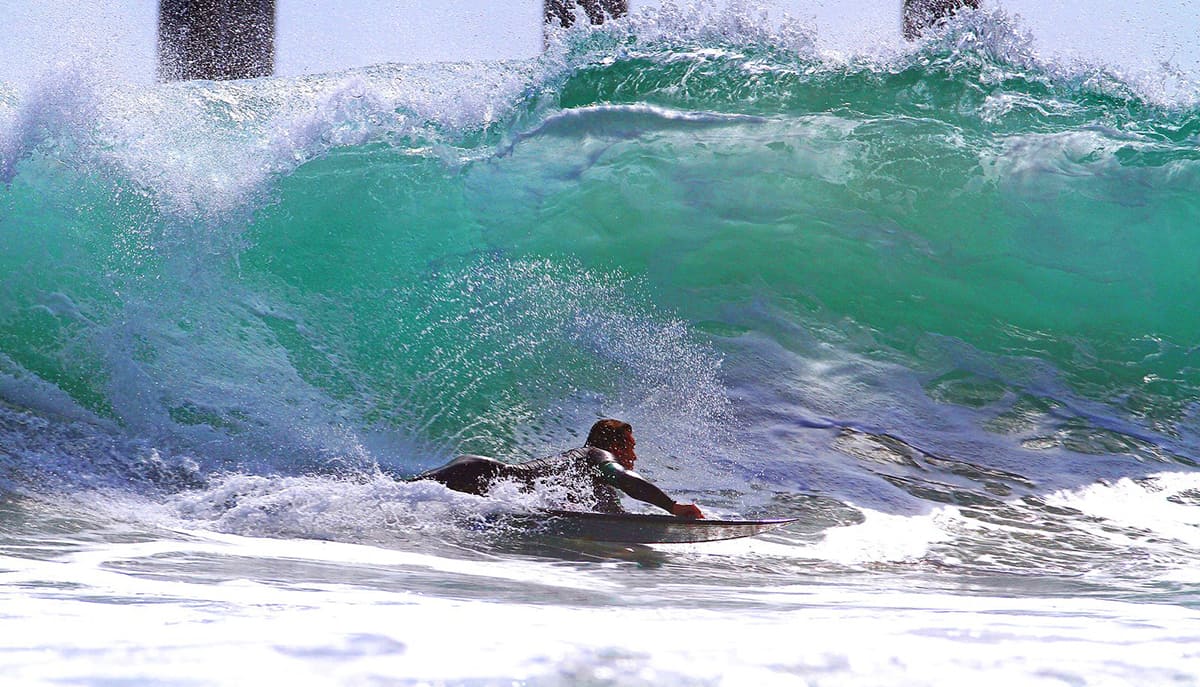
.
While I was interviewing him, Bailey was helping to load a container full of wheelchairs bound for Indonesia. Included were two of Box Wheelchairs’ WCMX chairs for riders on the island of Java. Bailey will be meeting the recipients in a month or so when the container arrives to help set them up in their new rides and instruct them in the fine art of ripping. Bailey has been to Indonesia before with Global Mobility, and just last year he had an experience there that he says “truly encapsulates why I do what I do” — getting a wheelchair set up for a young
boy, Raihan, who had never had a wheelchair, and had previously been carried everywhere by his family.
“Upon first glance, Raihan wasn’t quite sure what to make of it. … Then came the magical moment when he was got into his new ride and took his first push. The change in his expression, from a frown to a grin, was immediate and awe-inspiring.”
The More Things Change …
Bailey was paralyzed while skateboarding in 2006, an injury that appears to have had little more than a minor impact on his pursuits. It took exactly three days after he got out of rehab for him to make it back to the skate park.
“There’s a memorial skate contest that’s always held at Scotts Valley Skate Park [in Santa Cruz]. I was out there in my chair, an Invacare A4 with a high Jay 2 back, you know, absolutely not designed for any action or performance or skating, but I took my first little drop on a quarter pipe and kind of came to the realization that it was possible to skate.”
His return to surfing came but a week or so later, in a scene that would’ve fit nicely in Point Break. “Barney comes banging on my door at like 5 o’clock in the morning maybe a week and half, two weeks after I was out of the hospital, and I wake up out of this drug induced slumber and open the door and he’s like, ‘the surf’s pumping, we’re going out! I’m not taking no for an answer, get your suit on, asshole!’”
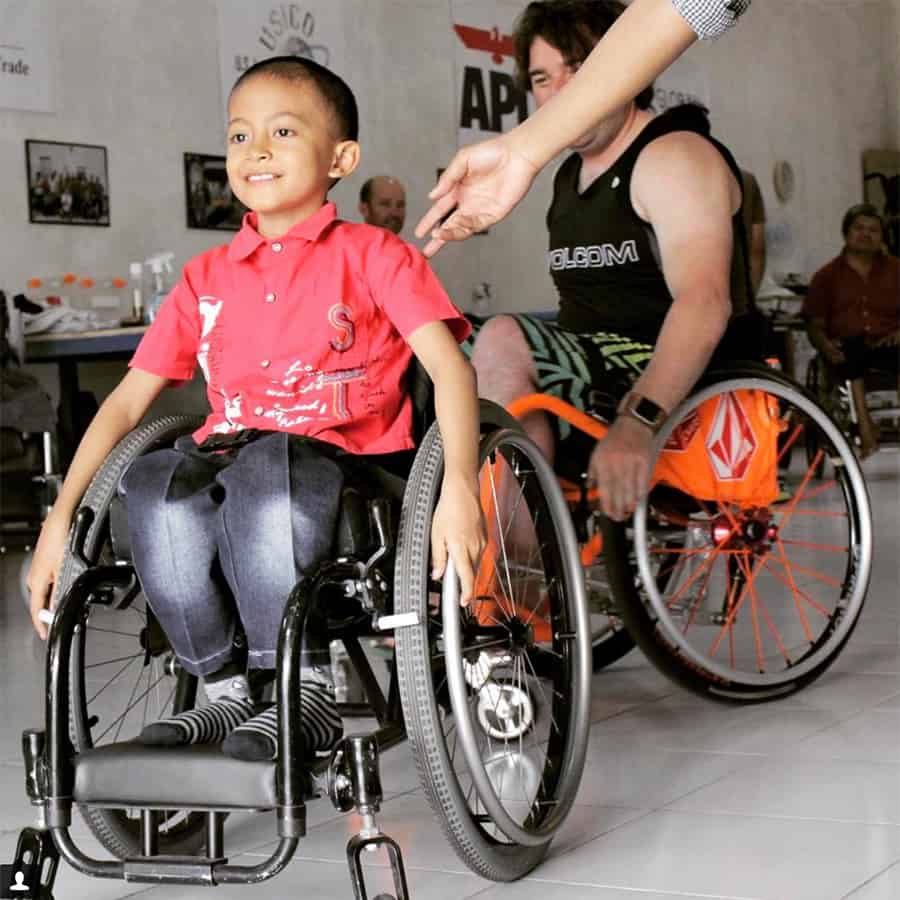
“So he transfers me into my chair and grabs my suit and I’m still sitting here in a turtle shell back brace. He grabs my 1978 Robert August pristine single fin off the wall and takes me out to Sewer Peak at Pleasure Point and pitches me into my first wave. From that point on I knew pretty much anything was possible.”
Both WCMX and adaptive surfing were just in their infancy at that point. Aaron Fortheringham, the now famous “Wheelz” of wheelchair backflip and Nitro Circus fame, was taking his chair to skate parks out in Las Vegas, but he was about the only other person doing it. There were a few international paras and amputees who were surfing lying down, but hardly anyone in the U.S. For both surfboards adapted for use by riders lying down and wheelchairs capable of handling the demands of a skate park, the technology didn’t really exist.
“After that first skating session, I actually brought it [the Invacare A4] over to my boys at Santa Cruz Bicycles and we chopped the hell out of the frame, took a plasma cutter to it and just started thinking, geometry wise, what would be the most efficient design for WCMX. We welded it together, and it worked pretty good for a little while.”
It was a similar story with adaptive surfing. You could do it on a regular stand up surf board, but it wasn’t ideal. The board shapes, because they were designed to distribute the weight of someone standing up, limited the ability to ride big, difficult waves.
“When you’re lying down on a board, you can shift your weight using your handles back slightly and forward slightly, but it really forces you to start from scratch, with a blank piece of paper to address the board design from zero. You have to really think scientifically about how you’re designing the board and how to best use your weight and positioning and the abilities that you do have in order to squeeze the most amount of performance out of the board.”
As the equipment has advanced, so has the worldwide popularity of both sports. Last year’s WCMX World Championships featured athletes from across North America, Europe, Israel, and Japan, and adaptive surfing is on a path for possible inclusion in the 2024 Paralympics in Paris. The sport has been championed by and brought under the fold of the International Surf Association. Bailey has been closely involved with developing the competition system needed to make surfing a Paralympic-level sport. In 2017 the World Championships for adaptive surfing had 29 national federations represented by 109 competitors. “I never knew adaptive surfing could get so big so quickly.”
Exhilarating and Terrifying
With the right board, there are few limits to the kind of waves that prone surfers can ride. “As long as you have a good crew, and a good shaper, and you train hard and you train right, pretty much anything is possible. There are a few waves out there that would be incredibly difficult for an adaptive surfer, but that certainly isn’t to say that they won’t happen in the future,” Bailey says.
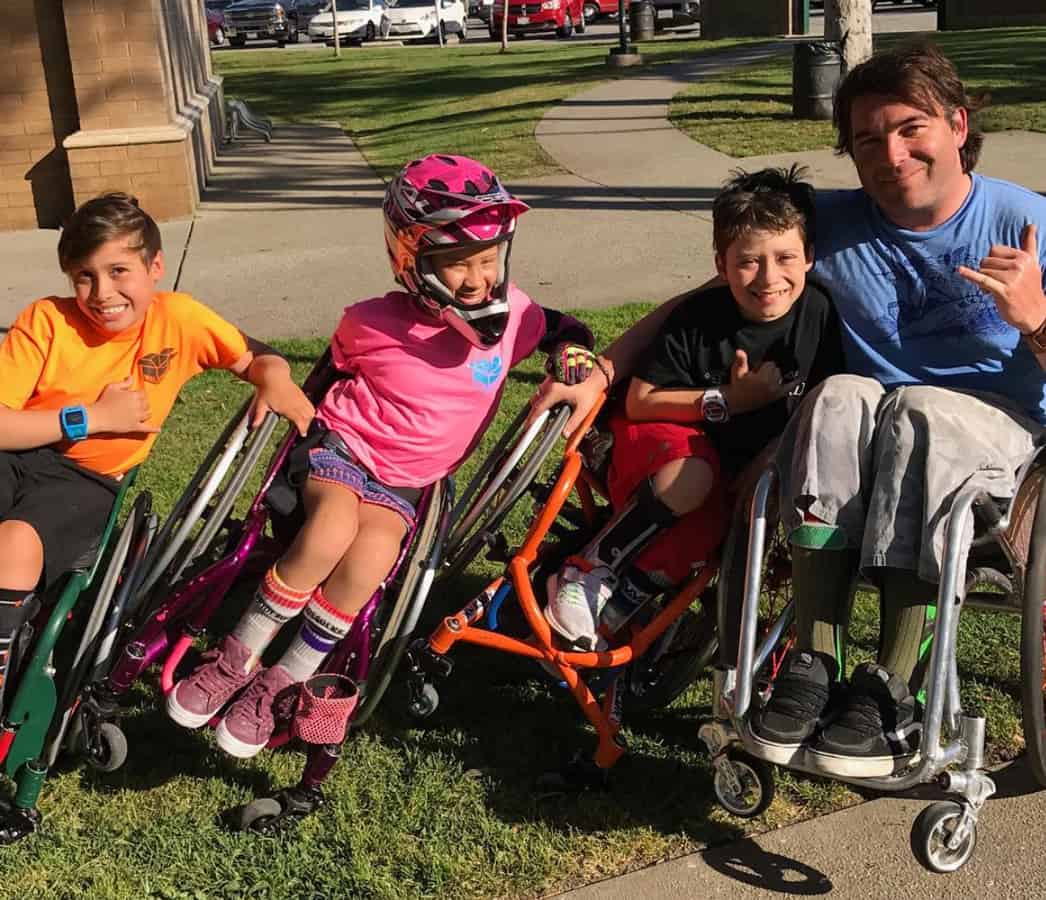
Bailey regularly surfs his old Santa Cruz haunts, and has ridden big, dangerous, world-class waves all over the world — from Pipeline to Teauhupo’o. The kind of waves that Bailey doesn’t see himself capable of riding — Shipstern Bluff in Tasmania, and Cortez Bank in California, to name a couple — are the kind of breaks that make professional big wave riders shudder. In 2010, Bailey became the first adaptive surfer to ride Mavericks, a colossal wave just south of San Francisco that typically only breaks during cold winter swells. Depending on the swell, it can range in size from 15 to 40 feet. If that’s tough to picture, imagine a three or four story building that suddenly breaks into a wall of water chasing you down the street.
Bailey describes riding Mavericks as, “the most exhilarating and simultaneously the most terrifying thing I’ve even done. There’s something to be said for going down a wave at 40 mph, six inches from the water and having a mountain of water chasing you that weighs 100,000 metric tons. It was absolutely terrifying, but also absolutely, hilariously fun.”
Shattering Perceptions
One of Bailey’s favorite things these days is mentoring young adaptive surfers and WCMX riders, kids who’ve had a disability since birth or a very young age. Turning a young person’s self-image from a kid in a wheelchair to a surfer or a WCMXer can have an immediate and lasting impact. To that end, 11 years ago he started a nonprofit, Ocean Healing Group, with the aim of giving kids with disabilities their first taste of independent adventure.
“We have a surf resort down in Santa Teresa [Costa Rica]. Over the course of 10 days we bring kids in chairs, physically disabled kids, and we take them on an adventure. Our major focus is to give the kids a sense of independence and really kind of cut the umbilical from the parents so their accomplishments are theirs and theirs alone. We go zip lining over the jungle, we take quad rides through the jungle and up on the beach and over rivers and all this stuff. We take them surfing every day obviously, and fishing. Our volunteers are mostly comprised of ex-military, firefighters, police officers, swift-water rescue personnel, coast guard, life guards, things like that. They help us empower the kids to really take their skills and their attitude to that next level as far as not just being a kid in a chair, but being an adaptive athlete. That’s our main goal, to shatter preconceptions or expectations.”
The same thing goes with helping kids in chairs at a skate park for the first time. Teaching kids that they’re not as fragile as they’ve been led
to believe is far more important than teaching them how to drop into a ramp.
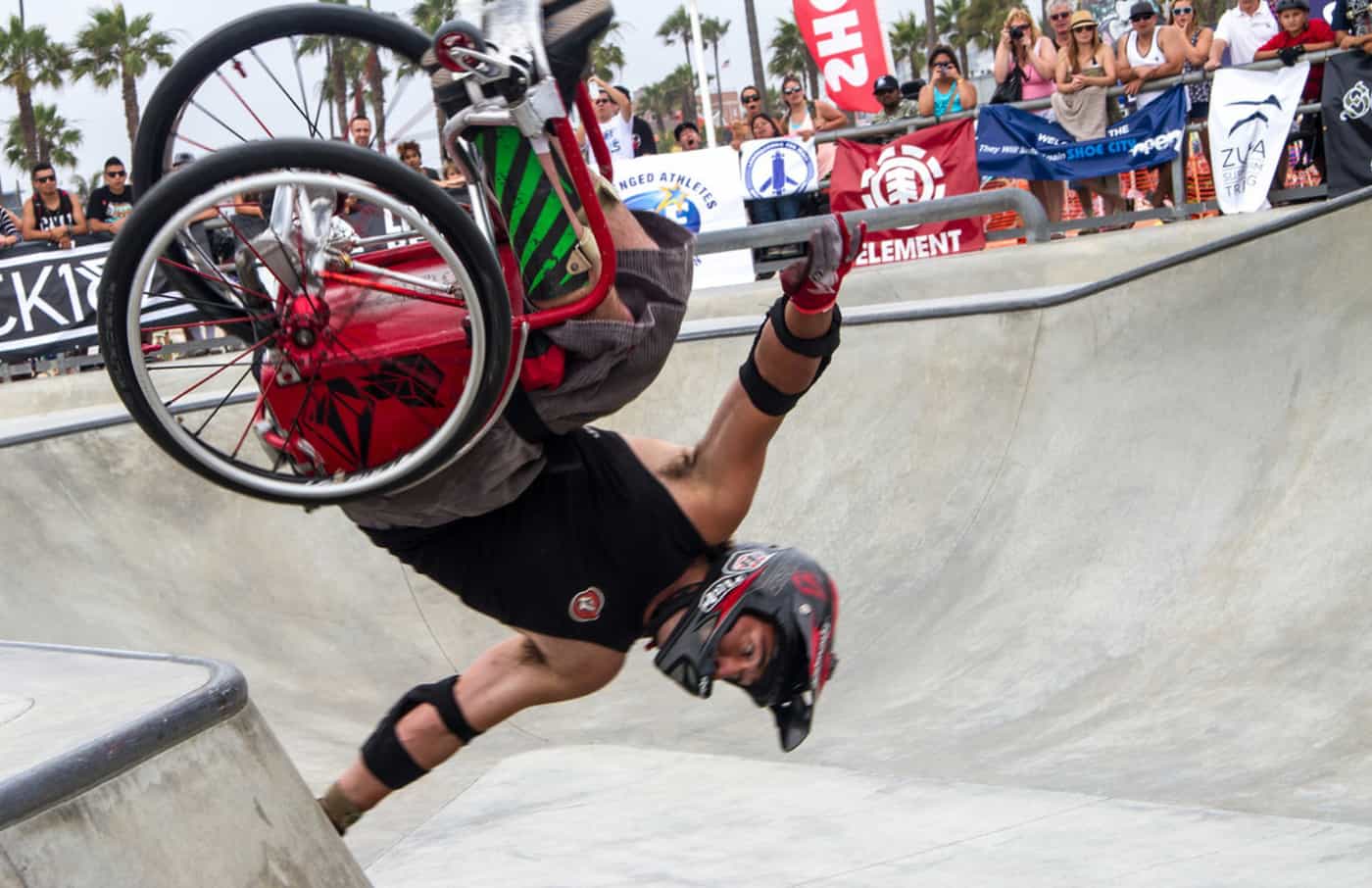
“[People in the rehab world] basically treat these kids with spina bifida and some with cerebral palsy like they’re a cracked vase, and if they fall out of their chair they’re going to be shattered into a million pieces, where in reality it’s the exact opposite. A lot of these kids have gone through some incredible trials and tribulations in their lives and they’ve spent their entire life being in and out of the hospital dealing with surgeries and pain and, so they’re really a hell of a lot stronger than most people give them credit for.”
“When you get these kids involved in WCMX … within a week or two all of a sudden they’re racing up and down the hallways of their school and their parents are getting concerned phone calls from the principal.”
Bailey asks, “Would you stop a nondisabled kid from jumping a set of stairs or playing on the jungle gym? No, you wouldn’t. Don’t treat these kids any differently. They’re just having their own way of play.
“That’s one of the incredible things about the sport, there’s this rapid acceleration of maturation and growth, not just physically, but also emotionally because there’s that paradigm shift, where their perspective no longer is, ‘I’m going to fall out of my chair,’ but ‘I don’t care If I fall out of my chair, it’s all right, I can get back up and try it again.’ Reinforcing that confidence and that drive is really critical, especially for disabled kiddos in this day and age.”
Advice from an Otter
If there’s one thing that’s clear from talking to Bailey, it’s that for him, sports like WCMX and adaptive surfing aren’t frivolous pursuits but a means of garnering the skills and confidence to live a fuller life.
“For anyone who’s newly injured, I’d recommend occupying every aspect of every day with something different. Whether it’s just pushing down the street or doing something. Just to get out of the headspace of the could’ve, would’ve, should’ves of life. Because when you’re stationary, in one place, it becomes very easy to fall into the ‘poor me’ mindset.
“Don’t be afraid to get the hell out of your house and push your limits because that’s where the best adventures are always found. You’re not going to find any staying at home and playing Xbox.”
Otter Glossary
Drop – To start rolling down a ramp, so named because many ramps have a vertical top face, so entering requires a drop.
Gnarly – Can be used for a variety of purposes, usually some combination of dangerous, rough and extreme.
Handles – Located at the front of an adaptive surfboard, placed there so a prone surfer can better control the board.
Quarter pipe – A type of ramp often seen in skate parks with the shape of a quarter circle.
Ripping – To be doing something very well.
Shaper – A person who custom shapes surfboards.
Shred – To attack what you’re doing with skill and aggressiveness. “He just shredded that wave.”
Support New MobilityWait! Before you wander off to other parts of the internet, please consider supporting New Mobility. For more than three decades, New Mobility has published groundbreaking content for active wheelchair users. We share practical advice from wheelchair users across the country, review life-changing technology and demand equity in healthcare, travel and all facets of life. But none of this is cheap, easy or profitable. Your support helps us give wheelchair users the resources to build a fulfilling life. |


Recent Comments
DINOS PITSILLIDES on Functional Fitness: How To Make Your Transfers Easier
Stosh on Functional Fitness: How To Make Your Transfers Easier
Bill on LapStacker Relaunches Wheelchair Carrying System